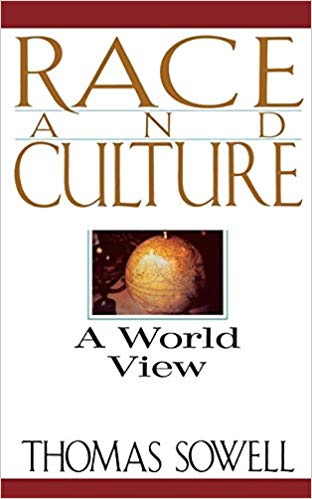A Brief Book Summary from Books At a Glance
By Benjamin Montoya
Editor’s Note
With this “Bonus” Book Summary we continue giving attention to contemporary cultural concerns.
About the Author
Thomas Sowell has taught economics at a number of colleges and universities, including Cornell, University of California Los Angeles, and Amherst. He has published both scholarly and popular articles and books on economics and is currently a scholar in residence at the Hoover Institution, Stanford University.
Introduction
Large and significant topics such as race and culture are undoubtedly familiar to many, if not all. But what do they mean? How can we look at them with a world view? How have they affected key areas of our lives and throughout history? Consider this book for more.
Note that we have previously provided summaries of Sowell’s other books. We would encourage the reader of this summary to read the others as well because they further elucidate many of the topics presented in this earlier published volume.
Table of Contents
Chapter 1 A World View
Chapter 2 Migration and Culture
Chapter 3 Conquest and Culture
Chapter 4 Race and Economics
Chapter 5 Race and Politics
Chapter 6 Race and Intelligence
Chapter 7 Race and Slavery
Chapter 8 Race and History
Chapter 1: A World View
When it comes to such loaded political ideas such as “race” and “culture,” it is important to take a world view of them to understand them from a scientific perspective. These are terms that have been used to support varying political agendas. But what do we really know about them? What do the races have in common? How do they differ? What has culture got to do with race? Although this chapter will only touch on some of these topics briefly, this chapter will help get a handle on these larger topics.
Let’s begin with definitions and then move to considering each more carefully. Race is used in the broad social sense in which it is applied in everyday life to designate ethnic groups of various sorts—by race, religion, or nationality. Culture refers to those aspects of culture which provide the material requirements for life itself—the specific skills, general work habits, saving propensities, and attitudes toward education and entrepreneurship (also known as “human capital”).
What do we know about race? As concerns the focus of this book, one key takeaway is that people can be successful regardless of their race. Now, the possibility of success does not guarantee success. What separates some races from others in terms of success is their developed capabilities. That is, skills that are acquired and honed. And for a variety of reasons, some races acquire and develop skills whereas others do not. Why is that?
Part of the reason involves geography. It is quite simple: if people are hard to access, like people living in the Himalayas, then, naturally, it will be more difficult for them to get the kind of skills-transference that other races have received from other races. This is a geographical disparity that results in a skills disparity.
What are the differences between races and cultures? One primary area is in economics. Some races double the economic output and worth of other races. There are, of course, varying reasons. Some of it has to do with work ethic whereas some of it has to do with the benefit of having learned from other cultures. Occupations present a wide area of difference. Some races tend to go into certain occupations that others do not. That does not mean someone cannot find a wide variety of racial representation in a wide variety of disciplines.
Despite the differences between race and culture, there are several similarities. Education is one of the most universally desired things across culture. Education is one of the important keys to success in life. That said, there is disparity between access to the education. In Third World countries that lag in technology and medicine, among other areas, they tend to focus on easier subjects whereas more developed countries focus on the more difficult topics of mathematics, science, engineering, or medicine.
As this book progresses, these much larger topics will receive further treatment and explanation.
Chapter 2: Migration and Culture
Migration is an important topic as relates to culture. But lest anyone think that migration is a simple topic, they must keep in mind that it is not. Migrations are important for cultures because they are shaped by the environments in which they have evolved into, but they also tend to shape the environments that they find themselves in.
Migrations have happened for all kinds of reasons. First, the conquest and conquering of one country from another has resulted in migrations. This reason has not been one of the primary reasons. Second, education is one the primary reasons why people migrate. In fact, more than half of engineering Ph.D.s awarded by American universities go to immigrants. Third, often people will immigrate for work or the promise of work. This reason is another primary reason why people migrate to another country. Much of the times, people would find the work they desired and, as a result, bring their families with them. But sometimes people were not so fortunate. They would, in fact, return to their home countries.
[To continue reading this summary, please see below....]The remainder of this article is premium content. Become a member to continue reading.
Already have an account? Sign In
